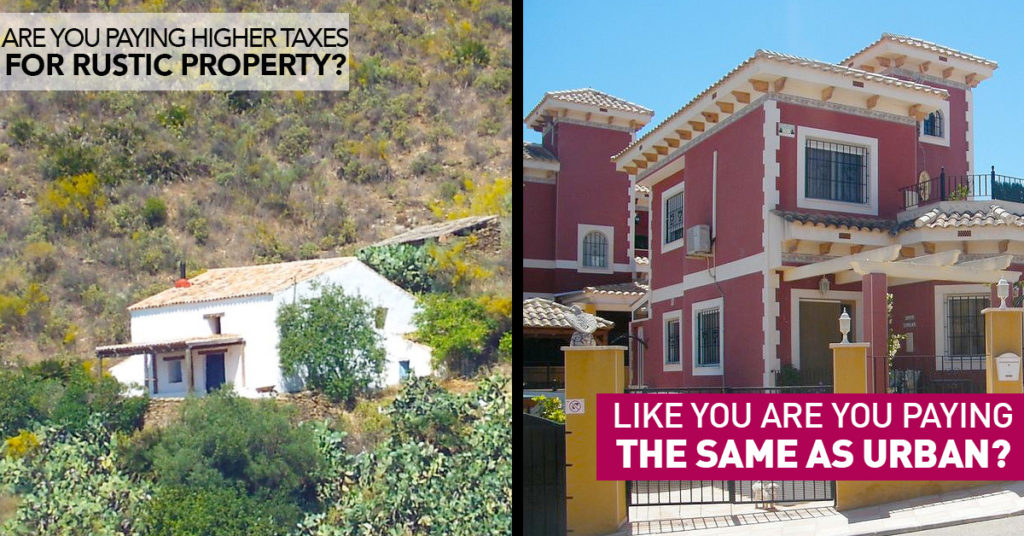Question:
Dear Lawyer,
In recent years the local taxes we pay for our villa in Spain have multiplied. I have asked at the Town Hall, and they told me that it is because the property used to be classified as rustic, and is now considered as developable (possibility to be urbanised), but there are no plans to urbanize it. Is this correct? Can we do something?
Dear reader, thank you for your enquiry.
Although it is impossible to provide you with a legal advice without reviewing in detail the documents and specific information regarding your situation, it is possible you may be affected by a review of the “cadastral” rating or classification of your property.
It often happens when a rustic property or undeveloped (non urbanisable) land is reclassified as developable (urbanisable), its cadastral value is reviewed, giving a value as developable property, which is much higher than that of a rustic property. However, this may happen without any actual project being approved for any development or any relevant planning instruments.
The consequence of this revision of the cadastral value is that there are rustic properties, which have been formally classified as developable, but with the crisis or for whatever reason, they will not be developed, so they will remain for practical purposes as rustic for many years, but, as they are formally recognized as developable, they are taxed as such, and their cadastral value is much greater than the actual value.
On this situation, the Supreme Court of Spain granted a judgment on the 30th of May 2014, stating that the cadastral value cannot be based solely on the classification of the property, so that land or property should only be valued as urban or developable and taxed as such when it is actually able to be really urbanized, i.e., the developable properties without development should be kept as rustic valuation for cadastral effects.
Readers should note that this is an issue of great importance, because a much higher cadastral value will mean numerous negative consequences, especially of a fiscal nature, such as:
. – a higher yearly IBI (Property Tax / Local tax).
. -If the property is transferred (sale, inheritance, gift) we would pay to the Town Hall a much higher Municipal Plusvalia (Gain) than we should. In fact, we should not pay anything if it is considered rustic.
. -It also affects the Income Tax for Residents and Non Residents, since we pay these taxes for properties that are not our main residence, based on their cadastral value, so we would be overpaying.
. -It has bad consequences on inheritance and gift tax, because the cadastral value is used to determine the minimum property value for these taxes. If the cadastral value is much lower, the valuation of the property for the purposes of succession and donation – gift will be much lower, which will mean major tax savings.
If you or someone you know is in this situation, you should request a revision of the cadastral value, and request that your urbanisable property that is not developed is valued as rustic based on the said judgment of the Supreme Spanish Court, you can also request and claim for a refund of the amount overpaid on the mentioned taxes. Remember that a lower cadastral value will mean large tax savings in the present and future. Contact Us.
The information provided in this article is not intended to be legal advice, but merely conveys general information related to legal issues.
Carlos Baos (Lawyer)
Spanish Law firm solicitor attorney barrister.
Alicante, Denia, Costa Blanca Marina Alta
White & Baos 2016 – All rights reserved
